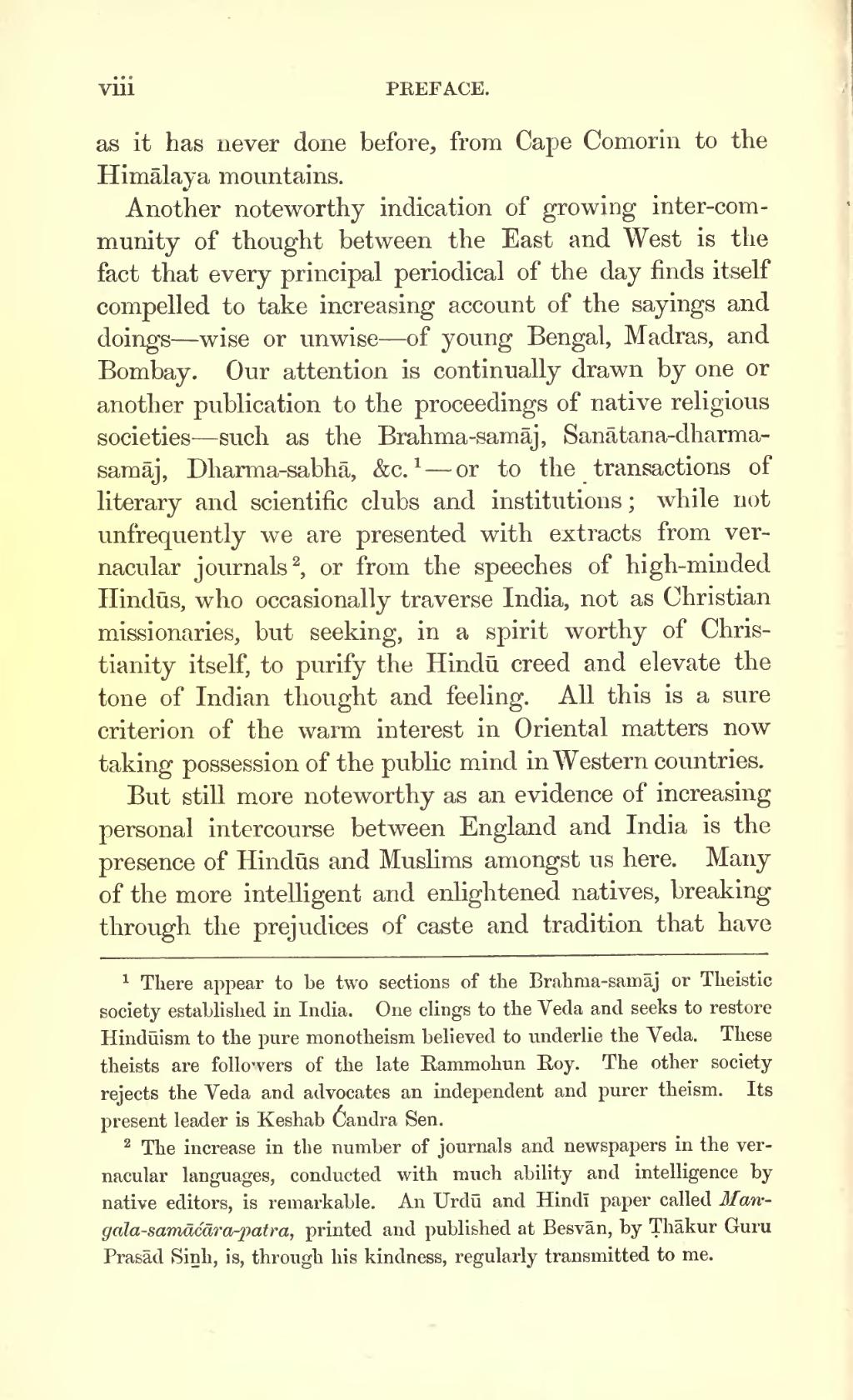as it has never done before, from Cape Comorin to the Himālaya mountains.
Another noteworthy indication of growing inter-community of thought between the East and West is the fact that every principal periodical of the day finds itself compelled to take increasing account of the sayings and doings—wise or unwise—of young Bengal, Madras, and Bombay. Our attention is continually drawn by one or another publication to the proceedings of native religious societies—such as the Brahma-samāj, Sanātana-dharma-samāj, Dharma-sabhā, &c.[1]—or to the transactions of literary and scientific clubs and institutions; while not unfrequently we are presented with extracts from vernacular journals[2], or from the speeches of high-minded Hindūs, who occasionally traverse India, not as Christian missionaries, but seeking, in a spirit worthy of Christianity itself, to purify the Hindū creed and elevate the tone of Indian thought and feeling. All this is a sure criterion of the warm interest in Oriental matters now taking possession of the public mind in Western countries.
But still more noteworthy as an evidence of increasing personal intercourse between England and India is the presence of Hindūs and Muslims amongst us here. Many of the more intelligent and enlightened natives, breaking through the prejudices of caste and tradition that have
- ↑ There appear to be two sections of the Brahma-samāj or Theistic society established in India. One clings to the Veda and seeks to restore Hindūism to the pure monotheism believed to underlie the Veda. These theists are followers of the late Rammohun Roy. The other society rejects the Veda and advocates an independent and purer theism. Its present leader is Keshab Ćandra Sen.
- ↑ The increase in the number of journals and newspapers in the vernacular languages, conducted with much ability and intelligence by native editors, is remarkable. An Urdū and Hindī paper called Mangala-samāćāra-patra, printed and published at Besvān, by Ṭhākur Guru Prasād Siṉh, is, through his kindness, regularly transmitted to me.
